Microstructure and Anisotropic Order Parameter of Boron-Doped Nanocrystalline Diamond Films
Abstract
:1. Introduction
2. Materials and Methods
3. Results
3.1. Microstructure
3.2. Electrical Conductivity: Evidence for RSOC
3.3. MR Transition below and above the Critical Point
3.4. Angle-Dependent Transition
3.4.1. Topological Superconductor
3.4.2. Geometric Phase Acquired by the GB
3.4.3. Shockley Model Simulation
4. Discussion
Funding
Institutional Review Board Statement
Informed Consent Statement
Data Availability Statement
Acknowledgments
Conflicts of Interest
Appendix A

References
- Zhang, G.; Samuely, T.; Kačmarčík, J.; Ekimov, E.A.; Li, J.; Vanacken, J.; Szabó, P.; Huang, J.; Pereira, P.J.; Cerbu, D.; et al. Bosonic Anomalies in Boron-Doped Polycrystalline Diamond. Phys. Rev. Appl. 2016, 6, 064011. [Google Scholar] [CrossRef]
- Bustarret, E. Superconductivity in doped semiconductors. Phys. C 2015, 514, 36. [Google Scholar] [CrossRef] [Green Version]
- Dubrovinskaia, N.; Wirth, R.; Wosnitza, J.; Papageorgiou, T.; Braun, H.F.; Miyajima, N.; Dubrovinsky, L. An insight into what superconducts in polycrystalline boron-doped diamonds based on investigations of microstructure. Proc. Natl. Acad. Sci. USA 2008, 105, 11619–11622. [Google Scholar] [CrossRef] [PubMed] [Green Version]
- Polyakov, S.N.; Denisov, V.N.; Mavrin, B.N.; Kirichenko, A.N.; Kuznetsov, M.S.; Martyushov, S.Y.; Terentiev, S.A.; Blank, V.D. Formation of boron-carbon nanosheets and bilayers in boron-doped diamond: Origin of metallicity and superconductivity. Nanoscale Res. Lett. 2016, 11, 11. [Google Scholar] [CrossRef] [Green Version]
- Nemeth, P.; McColl, K.; Garvie, L.A.J.; Salzmann, C.G.; Murri, M.; McMillan, P.F. Complex nanostructures in diamond. Nat. Mater. 2020, 19, 1126. [Google Scholar] [CrossRef]
- Tanigaki, K.; Ogi, H.; Sumiya, H.; Kusakabe, K.; Nakamura, N.; Hirao, M.; Ledbetter, H. Observation of higher stiffness in nanopolycrystal. Nat. Commun. 2013, 4, 2343. [Google Scholar] [CrossRef] [Green Version]
- Edelstein, V.M. Influence of an interface double electric layer on the superconducting proximity effect in ferromagnetic metals. JETP Lett. 2003, 77, 182. [Google Scholar] [CrossRef]
- Ryu, S. Three-dimensional topological phase on the diamond lattice. Phys. Rev. B 2009, 79, 075124. [Google Scholar] [CrossRef] [Green Version]
- Shen, I.M.; Hughes, T.L. Entanglement of a 3D generalization of the Kitaev model on the diamond lattice. J. Stat. Mech. 2014, 10, 10022. [Google Scholar]
- Mtsuko, D.; Coleman, C.; Bhattacharyya, S. Finite bias evolution of bosonic insulating phase and zero bias conductance in boron-doped diamond: A charge-Kondo effect. EPL 2019, 124, 57004. [Google Scholar] [CrossRef]
- Bhattacharyya, S.; Mtsuko, D.; Allen, C.; Coleman, C. Effects of Rashba-spin-orbit coupling on superconducting boron-doped nanocrystalline diamond films: Evidence of interfacial triplet superconductivity. New J. Phys. 2020, 22, 093039. [Google Scholar] [CrossRef]
- Mizushima, T.; Machida, K. Multifaceted properties of Andreev bound states: Interplay of symmetry and topology. Phil. Trans. R. Soc. A 2018, 376, 20150355. [Google Scholar] [CrossRef]
- Pal, A.; Ouassou, J.; Eschrig, M.; Linder, J.; Blamire, M.G. Spectroscopic evidence of odd frequency superconducting order. Sci. Rep. 2017, 7, 40604. [Google Scholar] [CrossRef]
- Eschrig, M.; Cottet, A.; Linder, J. General boundary conditions for quasiclassical theory of superconductivity in the diffusive limit: Application to strongly spin-polarized systems. New J. Phys. 2015, 17, 083037. [Google Scholar] [CrossRef] [Green Version]
- Haim, A. Spontaneous Josephson π junction with topological superconductors. Phys. Rev. B 2019, 100, 064505. [Google Scholar] [CrossRef] [Green Version]
- Fu, L.; Kane, C.L. Topological insulators with inversion symmetry. Phys. Rev. B 2007, 76, 045302. [Google Scholar] [CrossRef] [Green Version]
- Pershoguba, S.S.; Yakovenko, V.M. Shockley model description of surface states in topological insulators. Phys. Rev. B 2012, 86, 075304. [Google Scholar] [CrossRef] [Green Version]
- Tanaka, Y.; Sato, M.; Nagaosa, N. Symmetry and topology in superconductors -odd-frequency pairing and edge states. J. Phys. Soc. Jpn. 2012, 81, 011013. [Google Scholar] [CrossRef] [Green Version]
- Tanaka, Y.; Golubov, A.A. Theory of the proximity effect in junctions with unconventional superconductors. Phys. Rev. Lett. 2007, 98, 037003. [Google Scholar] [CrossRef] [PubMed] [Green Version]
- Agosta, C.C. Inhomogeneous Superconductivity in Organic and Related Superconductors. Crystals 2018, 8, 285. [Google Scholar] [CrossRef] [Green Version]
- Narayan, J. Dislocations, twins, and grain boundaries in CVD diamond thin films: Atomic structure and properties. J. Mater. Res. 1990, 5, 2411–2422. [Google Scholar] [CrossRef] [Green Version]
- Alegre, M.P.; Araujo, D.; Fiori, A.; Pinero, J.C.; Villar, M.P.; Achatz, P.; Chicot, G.; Bustarret, E.; Jomard, F. Critical boron-doping levels for generation of dislocations in synthetic diamond. App. Phys. Lett. 2014, 105, 173103. [Google Scholar] [CrossRef] [Green Version]
- Ramdas, A.K.; Rodriguez, S. Spin–orbit coupling, mass anisotropy, time-reversal symmetry, and spontaneous symmetry breaking in the spectroscopy of shallow centers in elemental semiconductors. Solid State Commun. 2001, 117, 213–222. [Google Scholar] [CrossRef]
- Kim, H.; Vogelgesang, R.; Ramdas, A.K.; Rodriguez, S. Electronic Raman and Infrared spectra of isotopically controlled blue diamonds. Phys. Rev. Lett. 1997, 79, 1706–1709. [Google Scholar] [CrossRef]
- Kim, H.; Ramdas, A.K.; Rodriguez, S.; Grimsditch, M.; Anthony, T.R. Spontaneous symmetry breaking of acceptors in blue diamonds. Phys. Rev. Lett. 1999, 83, 4140–4143. [Google Scholar] [CrossRef]
- Polyakov, S.N.; Denisov, V.N.; Zholudev, S.I.; Lomov, A.A.; Moskalenko, V.A.; Molchanov, S.P.; Martyushov, S.Y.; Terentiev, S.A.; Blank, V.D. Structure Investigations of Islands with Atomic-Scale Boron–Carbon Bilayers in Heavily Boron-Doped Diamond Single Crystal: Origin of Stepwise Tensile Stress. Nanoscale Res. Lett. 2021, 16, 25. [Google Scholar] [CrossRef]
- Kallin, C.; Berlinsky, J. Chiral superconductors. Rep. Prog. Phys. 2016, 79, 054502. [Google Scholar] [CrossRef]
- Morris, J.R.; Fu, C.L.; Ho, K.M. Tight-binding study of tilt grain boundaries in diamond. Phys. Rev. B 1996, 54, 132. [Google Scholar] [CrossRef]
- Ichinose, H.; Nakanose, M. Atomic and electronic structure of diamond grain boundaries analysed by HRTEM and EELS. Thin Solid Film. 1998, 319, 87. [Google Scholar] [CrossRef]
- Yu, R.; Wu, H.; Wang, J.D.; Zhu, J. Strain concentration at the boundaries in 5-fold twins of diamond and silicon. ACS Appl. Mater. Interfaces 2017, 9, 4253. [Google Scholar] [CrossRef]
- Bhattacharyya, S.; Auciello, O.; Birrell, J.; Carlisle, J.A.; Curtiss, L.A.; Goyette, A.N.; Gruen, D.M.; Krauss, A.R.; Schlueter, J.; Sumant, A.; et al. Synthesis and characterization of highly conducting nitrogen-doped ultra-nanocrystalline diamond films. App. Phys. Lett. 2001, 79, 1441. [Google Scholar] [CrossRef]
- Birrell, J.; Gerbi, J.E.; Auciello, O.; Gibson, J.M.; Gruen, D.M.; Carlisle, J.A. Bonding structure in nitrogen doped ultrananocrystalline diamond. J. App. Phys. 2003, 93, 5606. [Google Scholar] [CrossRef]
- Alff, L.; Beck, A.; Gross, R.; Marx, A.; Kleefisch, S.; Bauch, T.; Sato, H.; Naito, M.; Koren, G. Observation of bound surface states in grain-boundary junctions of high-temperature superconductors. Phys. Rev. B 1998, 58, 11197. [Google Scholar] [CrossRef] [Green Version]
- Kashiwaya, S.; Tanaka, Y.; Koyanagi, M.; Takashima, H.; Kamimura, K. Origin of zero-bias conductance peaks in high-TC superconductors. Phys. Rev. B 1995, 51, 1350. [Google Scholar] [CrossRef] [PubMed]
- Ekin, J.W.; Xu, Y.; Mao, S.; Venkatesan, T.; Face, D.W.; Eddy, M.; Wolf, S.A. Correlation between d-wave pairing behaviour and magnetic-field-dependent zero-bias conductance peak. Phys. Rev. B 1997, 56, 13746. [Google Scholar] [CrossRef] [Green Version]
- Hu, C.R. Midgap surface states as a novel signature for d2xa-x2b wave superconductivity. Phys. Rev. Lett. 1994, 72, 1526. [Google Scholar] [CrossRef] [PubMed] [Green Version]
- Coleman, C.; Bhattacharyya, S. Possible Observation of the Berezinskii-Kosterlitz-Thouless transition in Boron-doped diamond films. AIP Adv. 2017, 7, 115119. [Google Scholar] [CrossRef] [Green Version]
- Lu, H.-Z.; Shen, S.-Q. Weak antilocalization and localization in disordered and interacting Weyl semimetals. Phys. Rev. B 2015, 92, 035203. [Google Scholar] [CrossRef] [Green Version]
- Leksin, P.V.; Garif’Yanov, N.N.; Garifullin, I.A.; Fominov, Y.V.; Schumann, J.; Krupskaya, Y. Evidence for triplet superconductivity in a superconductor-ferromagnet spin valve. Phys. Rev. Lett. 2012, 109, 057005. [Google Scholar] [CrossRef] [Green Version]
- Aslam, M.; Gayen, S.; Singh, A.; Tanaka, M.; Yamaki, T.; Takano, Y.; Sheet, G. Anisotropic superconductivity in La(O,F)BiSeS crystals revealed by field-angle dependent Andreev reflection spectroscopy. Solid State Commun. 2017, 264, 26. [Google Scholar] [CrossRef] [Green Version]
- Spivac, B.Z.; Kivelson, S.A. Negative local superfluid densities: The difference between dirty superconductors and dirty Bose liquids. Phys. Rev. B 1991, 43, 3740. [Google Scholar] [CrossRef] [PubMed]
- Levi, D.; Shaulov, A.; Frydman, A.; Koren, G.; Shapiro, B.Y.; Yeshurun, Y. Periodic negative magnetoresistance in granular YBa2Cu3O7−δ nanowires. EPL 2013, 101, 67005. [Google Scholar] [CrossRef]
- Pandey, K.C. New dimerized-chain model for the reconstruction of the diamond (111)-(2x1) surface. Phys. Rev. B 1982, 25, 4338. [Google Scholar] [CrossRef]
- Pamuk, B.; Calandra, M. Competition between exchange-driven dimerization and magnetism in diamond (111). Phys. Rev. B 2019, 99, 155303. [Google Scholar] [CrossRef] [Green Version]
- Jak, J. Berry’s phase for energy bands in solids. Phys. Rev. Lett. 1989, 62, 2747. [Google Scholar]
- Mizoghichi, T.; Hatsugai, Y. Type-III Dirac cones from degenerate directionally flat bands: Viewpoint from Molecular-orbital representation. J. Phys. Soc. Jap. 2020, 89, 103704. [Google Scholar] [CrossRef]
- Chen, Y.; Roushan, P.; Sank, D.; Neill, C.; Lucero, E.; Mariantoni, M.; Barends, R.; Chairo, B.; Kelly, J.; Megrant, A.; et al. Emulating weak localization using a solid-state quantum circuit. Nat. Commun. 2014, 5, 5184. [Google Scholar] [CrossRef] [Green Version]
- Bhattacharyya, S.; Bhattacharyya, S. Demonstrating geometric phase acquisition in multi-path tunnel systems using a near-term quantum computer. J. Appl. Phys. 2021, 130, 034901. [Google Scholar] [CrossRef]
- Bhattacharyya, S.; Bhattacharyya, S. Holonomic control of a three-qubits system in an NV center using a near-term quantum computer. arXiv 2022, arXiv:2202.08061. [Google Scholar]
- Boustani, I. New quasi-planar surfaces of bare boron. Surf. Sci. 1997, 370, 355–363. [Google Scholar] [CrossRef]
- Liu, X.; Li, Q.; Ruan, Q.; Rahn, M.S.; Yakobson, B.I.; Hersam, M.C. Borophene synthesis beyond the single-atomic-layer limit. Nat. Mater. 2022, 21, 35–40. [Google Scholar] [CrossRef] [PubMed]
- Li, Q.; Kolluru, V.S.C.; Rahn, M.S.; Schwenker, E.; Li, S.; Hennig, R.G.; Darancet, P.; Chan, M.K.Y.; Hersam, M.C. Synthesis of borophene polymorphs through hydrogenation of borophene. Science 2021, 371, 1143–1148. [Google Scholar] [CrossRef] [PubMed]
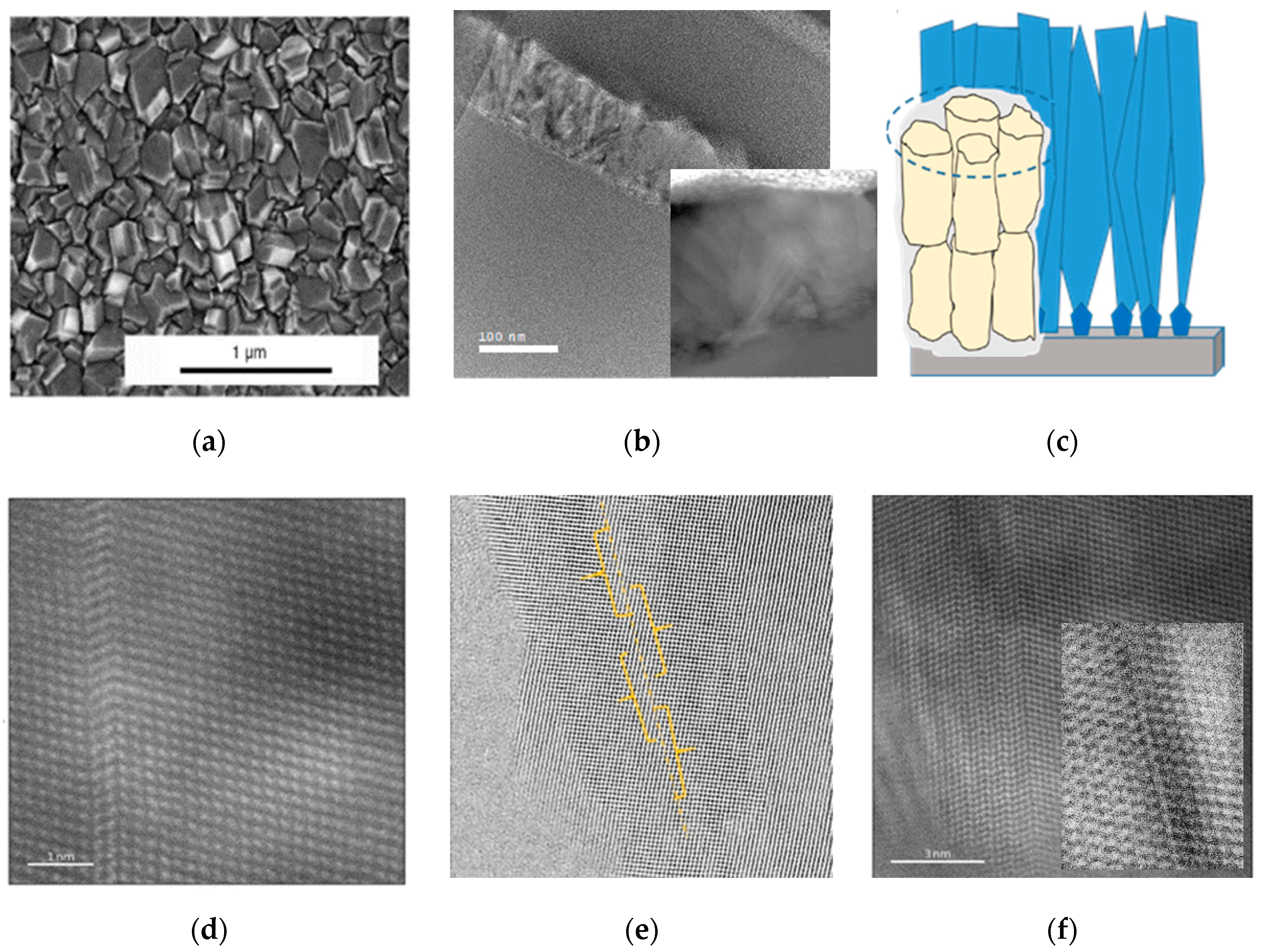
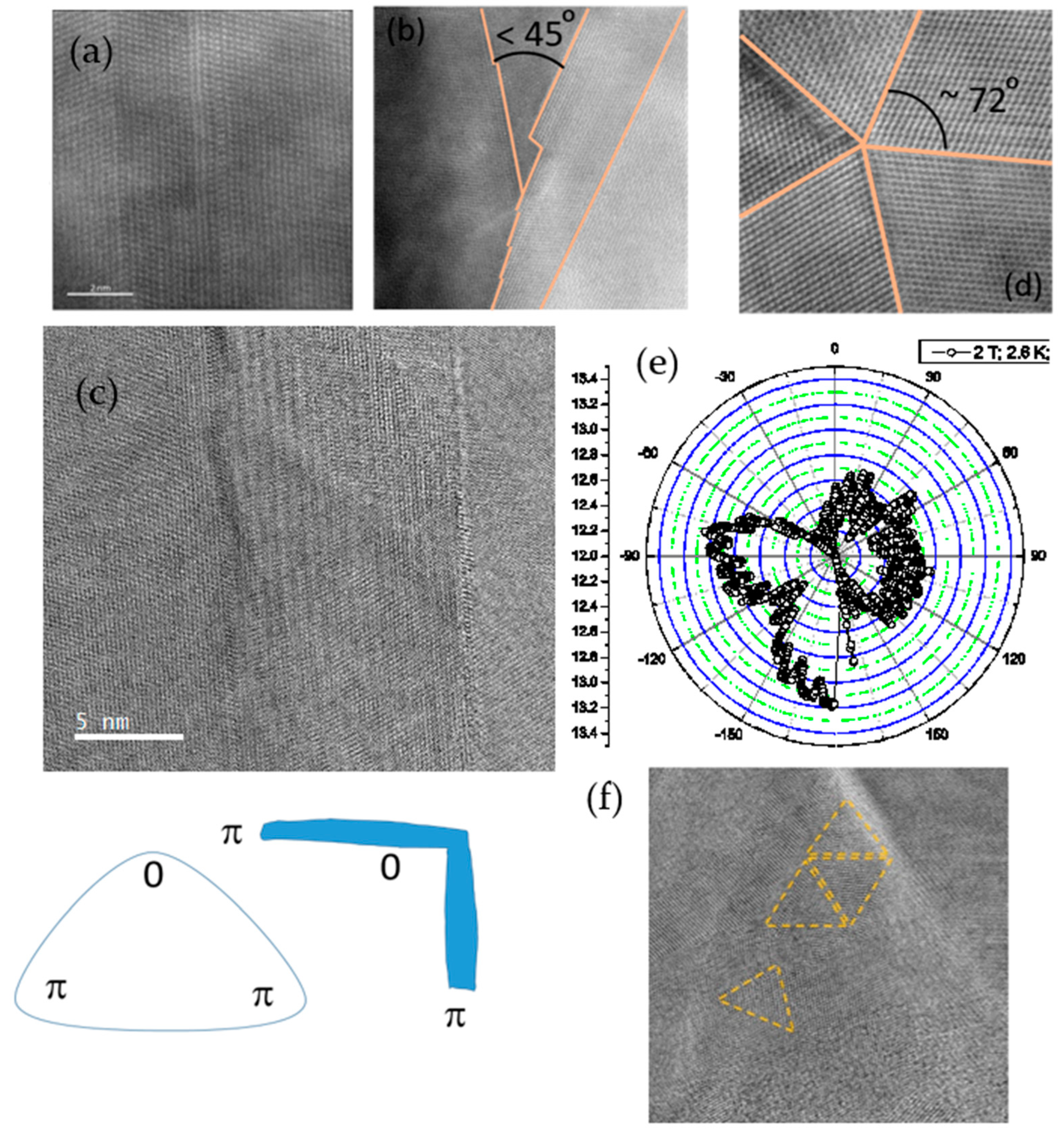
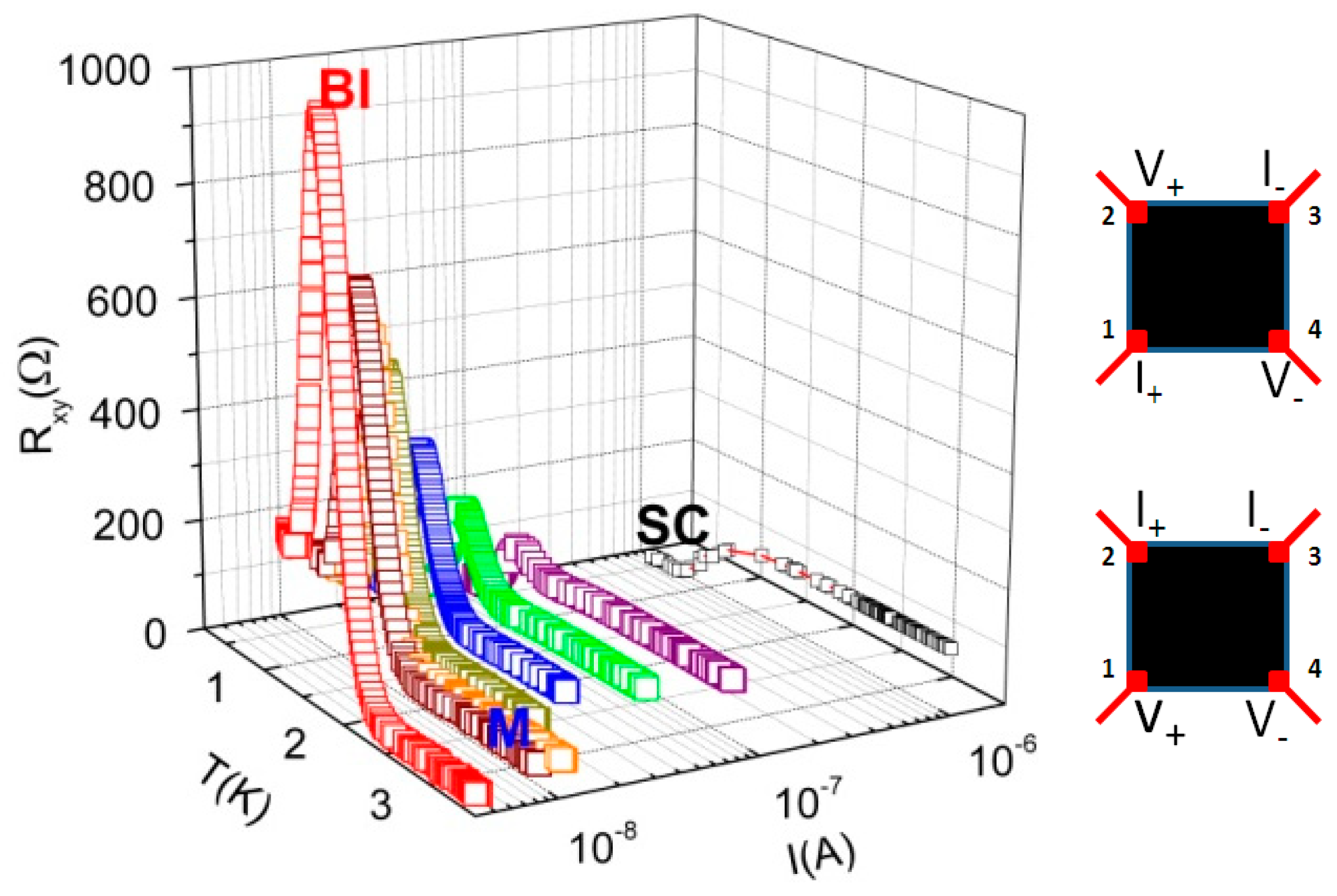
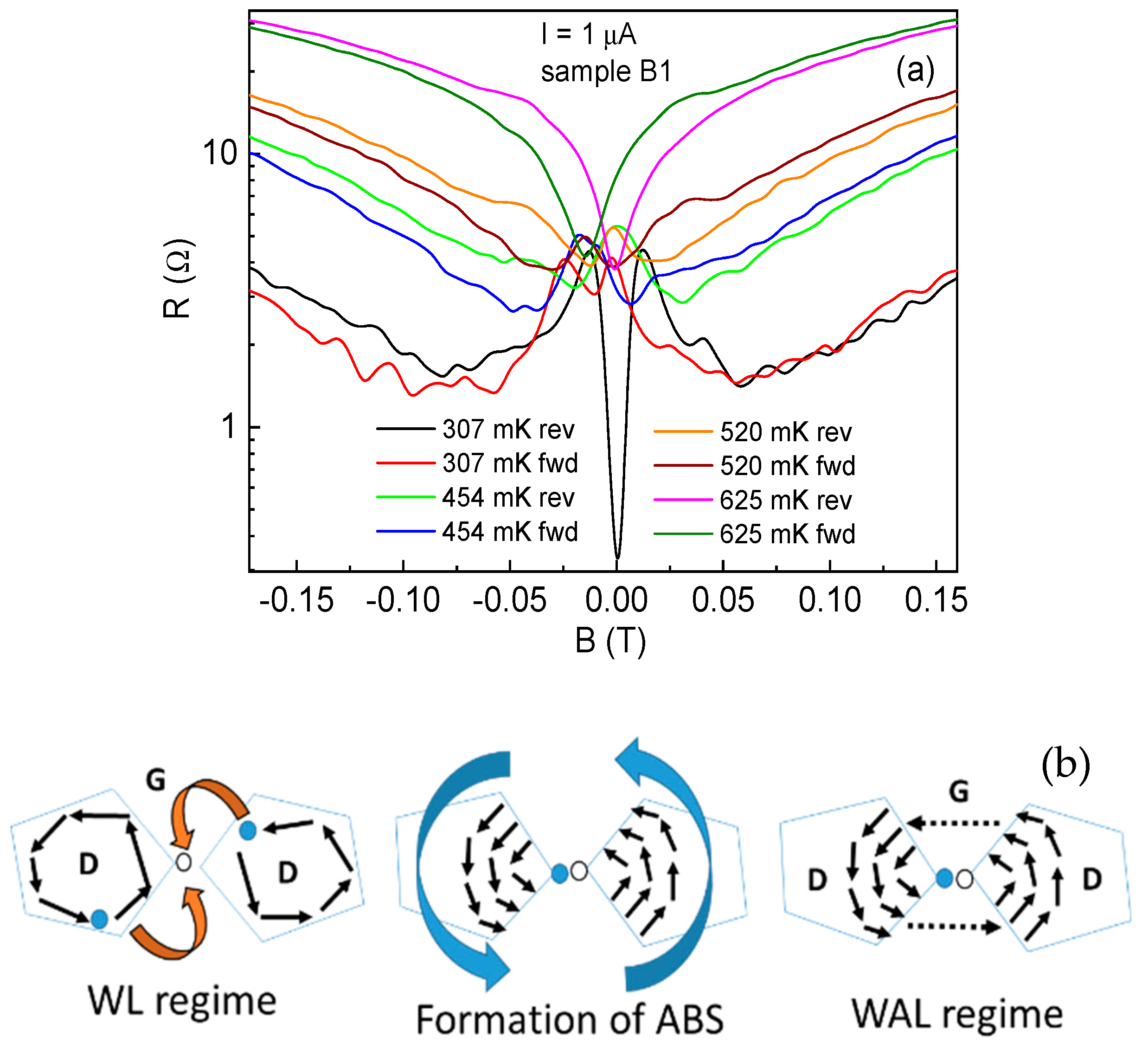
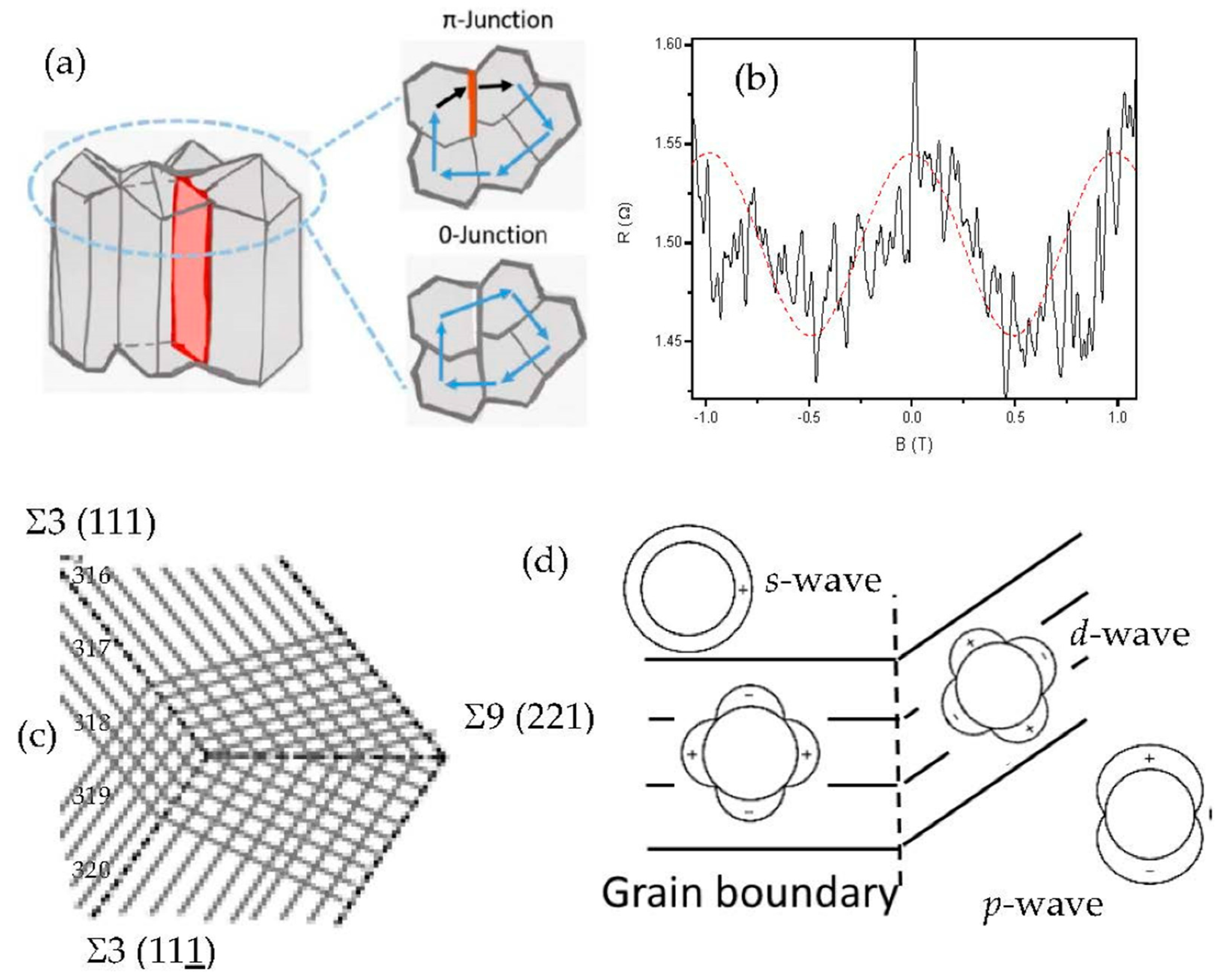
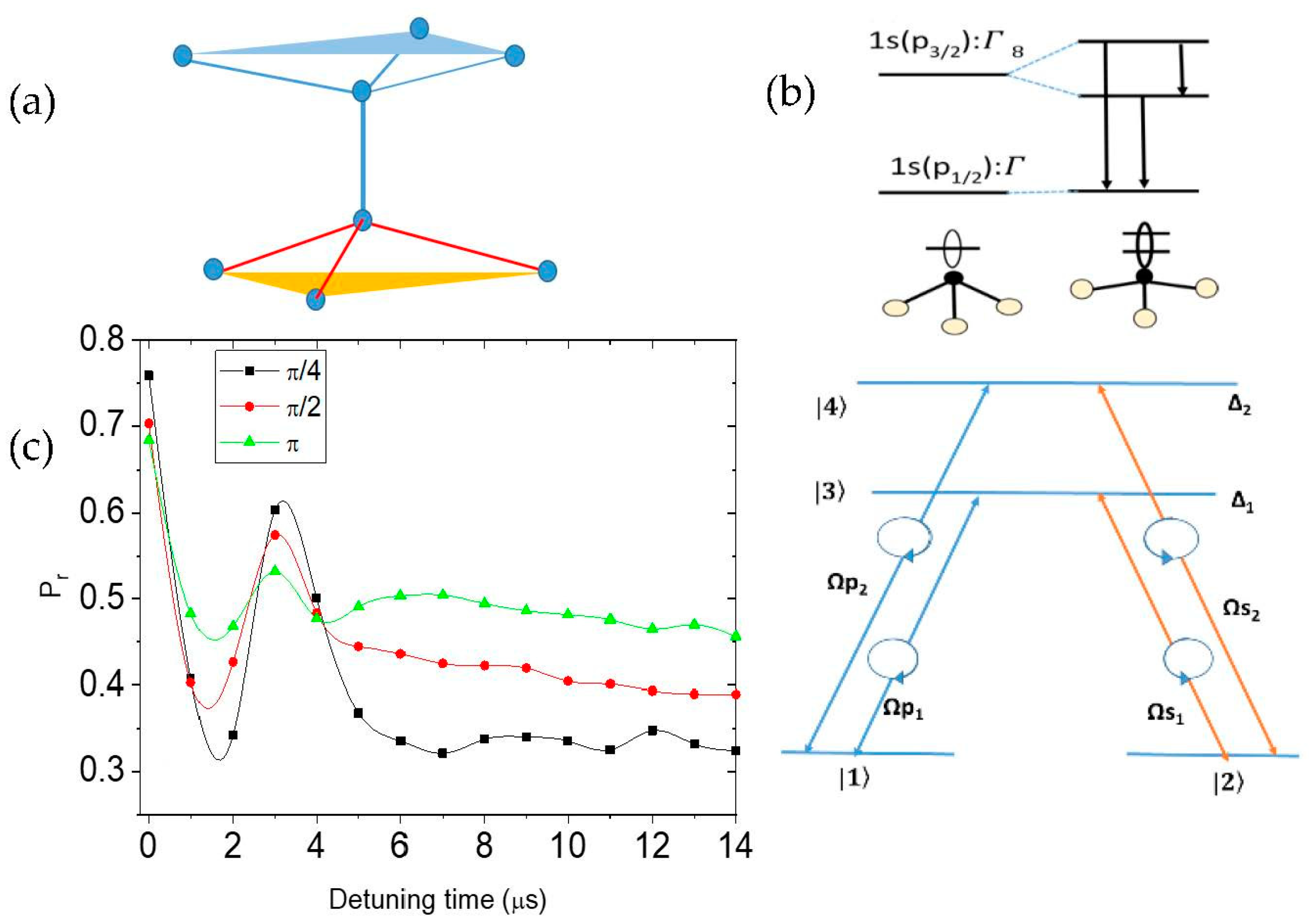
Publisher’s Note: MDPI stays neutral with regard to jurisdictional claims in published maps and institutional affiliations. |
© 2022 by the author. Licensee MDPI, Basel, Switzerland. This article is an open access article distributed under the terms and conditions of the Creative Commons Attribution (CC BY) license (https://creativecommons.org/licenses/by/4.0/).
Share and Cite
Bhattacharyya, S. Microstructure and Anisotropic Order Parameter of Boron-Doped Nanocrystalline Diamond Films. Crystals 2022, 12, 1031. https://doi.org/10.3390/cryst12081031
Bhattacharyya S. Microstructure and Anisotropic Order Parameter of Boron-Doped Nanocrystalline Diamond Films. Crystals. 2022; 12(8):1031. https://doi.org/10.3390/cryst12081031
Chicago/Turabian StyleBhattacharyya, Somnath. 2022. "Microstructure and Anisotropic Order Parameter of Boron-Doped Nanocrystalline Diamond Films" Crystals 12, no. 8: 1031. https://doi.org/10.3390/cryst12081031
APA StyleBhattacharyya, S. (2022). Microstructure and Anisotropic Order Parameter of Boron-Doped Nanocrystalline Diamond Films. Crystals, 12(8), 1031. https://doi.org/10.3390/cryst12081031





